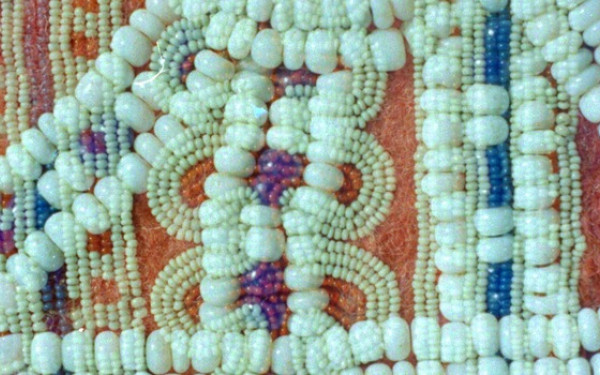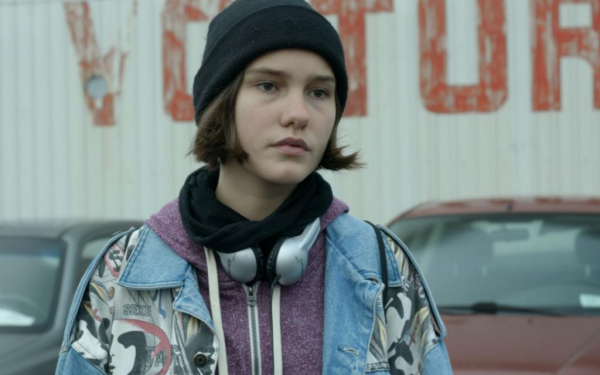Sonia Boileau’s ‘Rustic Oracle’ places Indigenous women at the helm of creative direction
Spiritual reconnection and decolonization through collective Indigenous art
“What we put on screen is etched in time, right?”
Those were the words of Sonia Bonspille Boileau, the creative mind behind 2019 film Rustic Oracle. The formative role of art in building self-esteem and creating social identity is a well-documented fact, and in her artistic process the Mohawk filmmaker challenges the discrepancy between representations of Indigenous women as victims that she’d seen growing up versus her lived truth: she has always been surrounded by strong women.
“Film and art are a reflection of society,” said Boileau, in a recent lecture titled “Decolonizing the Screen through Indigenous Cinema” that was part of an event series on multi-disciplinary challenges to Indigenous spirituality. That is why having Indigenous women lead the narrative in her film was a crucial act of renegotiating power, she said.
Rustic Oracle illustrates the story of a missing Indigenous girl through the eyes of her younger sister, Ivy. The film earns its namesake through the dandelion’s symbolism, she added.
“There’s a notion of the dandelion being the flower that can carry your wishes and childhood memories into the wind,” she said.
Portraying the story through the eyes of a child added a tinge of hope and lightness to the narration, said Boileau.
“It’s a beautiful, very powerful flower,” Boileau said. “It has all kinds of medicines, it’s edible, it can cure diseases, it can grow anywhere, it tells time.”
And yet, the way we view it in the world is like a bad weed, she added. But it is a flower of resilience, and that metaphor lends itself particularly well to the Indigenous characters of the film.
Boileau explains that Ivy, as a child, is the oracle: she brings intuitive strength and moments of humour to the other women of the community as they grapple with indifferent police officers on their search for their missing sister.
“Those moments where she’s in tears in the film, she was in tears in real life,” said Boileau of Lake Delisle, the young actress who plays Ivy. “Because there was an emotional connection to the content of the film.”
The community effort of telling the story—as well as Delisle’s relative youth and ability to bounce back from difficult scenes—made the process easier, however.
“I hired as many people as I could, from all departments, so that we could try to tell this story together as Indigenous women. Because that’s how we’re going to decolonize the screen.”
— Sonia Boileau
“When I watch it now, I actually feel the community with me,” said Boileau. “You can almost sense it when you’re watching it, that they are there.”
The filming for Rustic Oracle took place in Kanesatake, where Boileau grew up. Having a cast that was primarily Indigenous, with the majority being women, helped filmmaking feel like a collective act of power.
“I hired as many people as I could, from all departments, so that we could try to tell this story together as Indigenous women,” said Boileau. “Because that’s how we’re going to decolonize the screen.”
Boileau mentioned that as a filmmaker, her craft is a personal tool for self-exploration. “The very first documentary that I did in 2010, called Last Call Indian, was all about exploring the reasons why I felt so disconnected to my culture.”
Creating art has helped her bridge that disconnect and feel closer to her roots, she said, and the process of shooting this film has made lasting memories for her and given her a chance to give back to the residents of Kanesatake.
Boileau’s empathic and intuitive approach to art as a spiritual and healing force has also been shared by researchers. Dr. Felice Yuen, an applied human sciences professor at Concordia, has been involved in art programs that facilitate Indigenous women reconnecting with their culture.
Past workshops have included creating body maps with paint, learning to craft medicine pouches, and drumming.
“I remember one woman saying ‘I’ve never felt so free in my life’ during the drumming ceremony,” said Yuen, recalling a workshop she led with incarcerated Inuit women. “Meaning that in society—nevermind in prison—they have to hide who they are.”
The workshops are meant to take a more holistic approach to art to help the women express themselves, said Yuen.
“Art allows for a way of knowing that is less linear, more in the body,” she added. The trauma and loss experienced by some of the women is too difficult to speak about, she said, and having creative outlets help the women express their emotions in a contained way.
“But it’s more than that too, it’s spiritual,” said Yuen. “She said, ‘It’s my heart, the drumming is my heartbeat.’”
Another woman, during the smudging process—the Indigenous ceremony of burning sacred herbs—said the smell of sweetgrass was powerful and reminded her of childhood.
“It may have awakened some part of her identity that was silenced, marginalized,” said Yuen. In the togetherness of the activities, there is a space for the women to safely explore their Indigeneity, she added. It is the act of being able to share and exchange parts of their culture that is important to these women.
“That sense of collective power, being able to share and learn about each other, and say: ‘You’re not alone’ was part of the healing,” said Yuen.
That these women only found this space in activity forums inside prison walls is the sad reminder of the devastating effects of colonization on Indigenous communities in Canada.
But initiatives like those of Boileau and Yuen continue to highlight a profound, unshakeable resilience in First Nations communities, and the courage and sadness in their stories will continue to resonate loudly, demanding to be heard.


_600_832_s.png)


web_600_375_90_s_c1.jpg)

